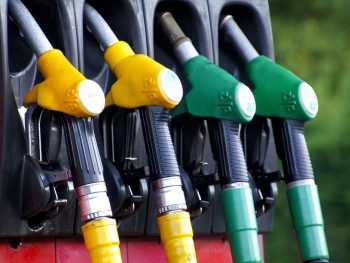Fears for fuel prices and global inflation following OPEC+ oil cuts
Motorists are likely to be in for further pain at the pumps as oil prices rise on the back of continued production curbs.

The continued OPEC+ prodution curbs are likely to ramp up petrol price pain
The cost of oil has climbed above $90 a barrel for the first time since November 2022 after the OPEC+ group of oil-producing countries said they would continue to hold production.
Saudi Arabia announced it would maintain its production cut of one million barrels a day until December. This maintains the country’s output at nine million barrels a day, the lowest amount in several years.
Russia has also confirmed it will maintain its own cutback of 300,000 barrels a day for the same period.
DeVere Group, one of the world’s largest independent financial advisory, asset management and fintech organisations, has warned of the potential impact on fuel prices and the outlook for global inflation.
Nigel Green, the founder of the group, said: “OPEC+ is ramping up petrol price pain, triggering fresh and increasing concerns about rising global inflation – which was just beginning to ease – meaning central banks could possibly push higher-for-longer interest rates.”
He continued: “Restricted oil supply leads to higher oil prices, which, in turn, can contribute to higher fuel prices for consumers and businesses, putting upward pressure on overall inflation.
“Higher energy costs also lead to increased production costs for companies, which are typically passed on to consumers in the form of higher prices for goods and services, again contributing to inflationary pressures.”
Green said the OPEC+ move would naturally be considered by central banks when formulating monetary policy.
“If rising oil prices are expected to have a sustained impact on inflation, central banks can be expected to maintain higher interest rates for longer to control soaring prices.”
He added: “The decision by the group of oil-producing countries will further exacerbate the cost-of-living and cost-of-business crisis as inflation is given another global boost.”
Earlier this week, the RAC warned that climbing oil costs had led to drivers being hit by one of the biggest monthly fuel price rises in over 20 years in August as petrol shot up by nearly 7p a litre and diesel by 8p.
RAC spokesman Rod Dennis commented: “Drivers had already seen a sharp increase in pump prices through the course of August as a result of the oil price rising.
“An even higher oil price is likely to force wholesale fuel prices up further, and – if these are sustained – that’s likely to spell further price rises on forecourts up and down the UK in the coming weeks.”
Last month’s pump price rises have already added around £4 to the cost of a full tank of fuel – but the RAC has said that the impact could have been greater had big retailers not let their margins go back to more normal levels after the Competitions and Markets Authority’s report earlier this summer revealed retailers had increased their fuel margins.
The Government is still pushing ahead with plans to make retailers display live prices to help drivers shop around for cheaper fuel. Drivers can also use the Fuel Finder feature in the free myRAC app from the App Store or Google Play to help find the cheapest fuel sites within a given area, compared to UK average prices for both petrol and diesel.












